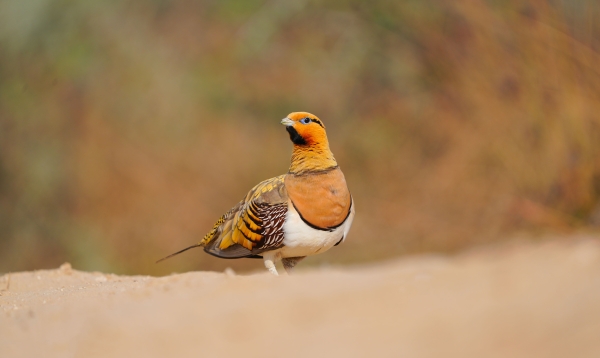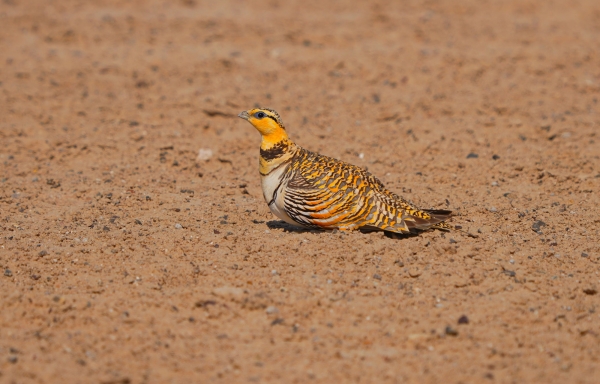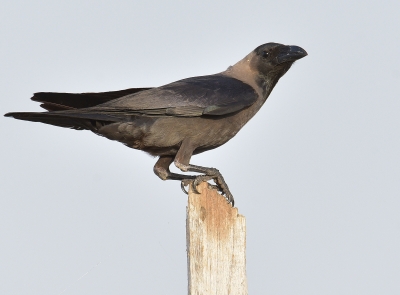


The Chestnut-Bellied Sandgrouse, also known as the common sandgrouse (Pterocles exustus), is a common resident and breeding bird in the Kingdom of Saudi Arabia. The Kingdom houses two of its known subspecies, including the (Pterocles Exustus Erlangeri), residing southwest of the Kingdom. It annually breeds in the Kingdom where the country has become a habitat for around twenty thousand pairs.
Areas of active presence of the chestnut-bellied sandgrouse in Saudi Arabia
The chestnut-bellied sandgrouse is mainly found in the lowlands of Tihama, usually at altitudes below one thousand m in arid sandy deserts or gravel plains where shrubs or trees grow. The bird is most active in sewage lagoons in Abu Arish, in Jazan Province, southwest of the Kingdom.
Chestnut-bellied sandgrouse listing under the Red List of Threatened Species
The chestnut-bellied sandgrouse is listed under the Red List of Threatened Species issued by the International Union for Conservation of Nature (IUCN) as a globally and regionally non-endangered species.
Behavior of the chestnut-bellied sandgrouse
The chestnut-bellied sandgrouse is mostly active during daytime. It feeds on seeds picked from the soil and can travel up to sixty km in all directions to drink from water springs.
The bird features elongated central tail feathers. Sandgrouses are considered to be social birds, and hundreds or even several thousand are found alongside ponds and water wells. Its height ranges from thirty-one to thirty-three cm, and its weight is between 140 and 240 g. It has a wingspan of forty-eight to fifty-one cm.
Breeding of the chestnut-bellied sandgrouse
The chestnut-bellied sandgrouse is a monogamous bird that lives in breeding pairs in specific areas. Male and female sandgrouses are jointly responsible for incubation, where the female sandgrouse incubates eggs during the day, while the male sandgrouse takes on this responsibility at night. They both care for their younglings after hatching and until they become adults.
The bird's nest consists of a shallow, unlined hole, dug in sand, gravel, or open areas at times. Its nests can also be found near a rock or under a small shrub. Nests have an incubation capacity for three eggs. The incubation period lasts twenty-two or twenty-three days, after which younglings leave their nests shortly afterward and follow their parents.
Related quizzes
Related articles

